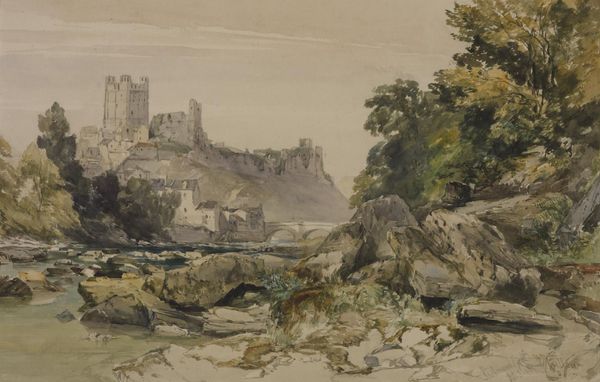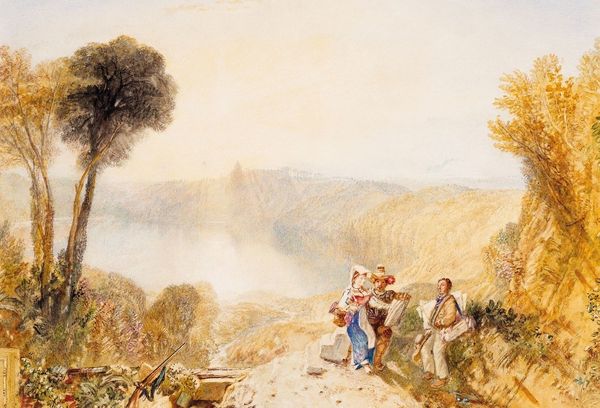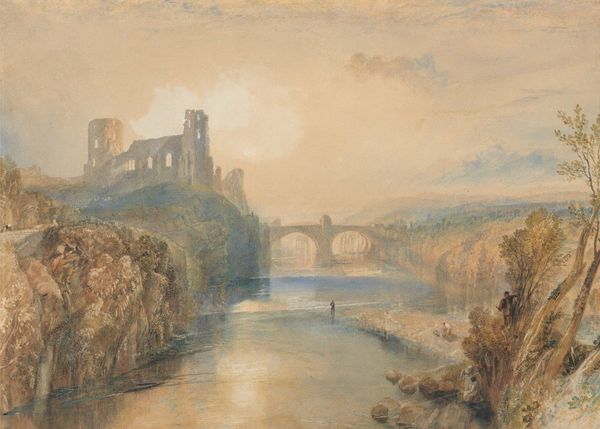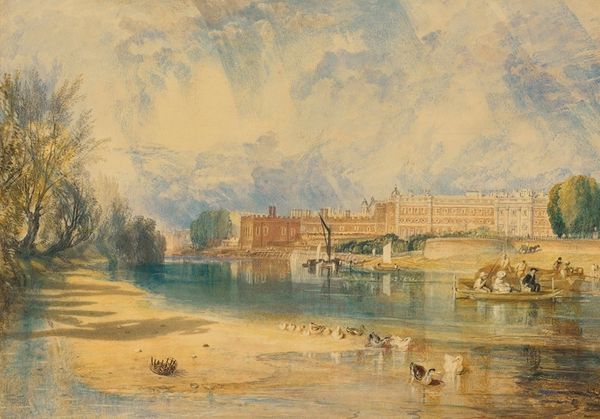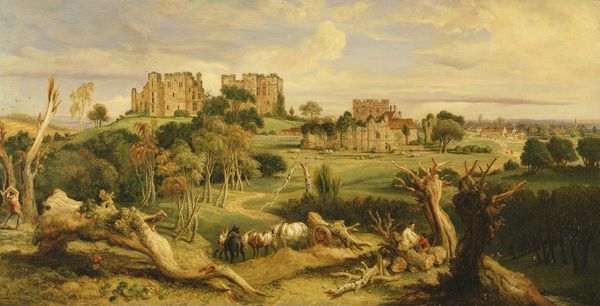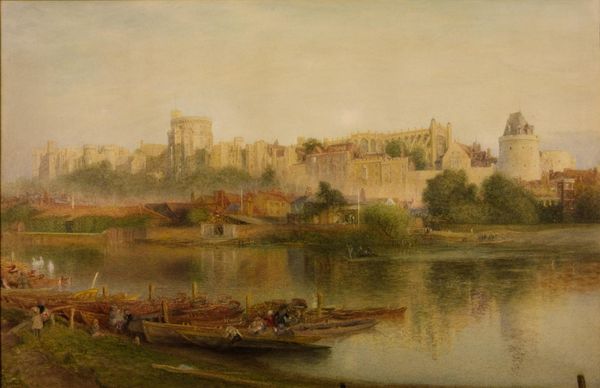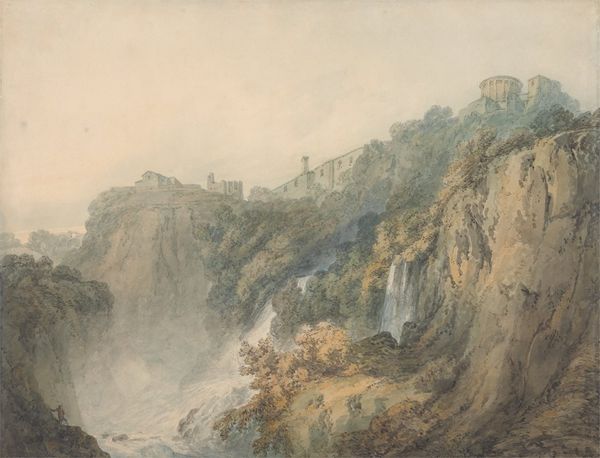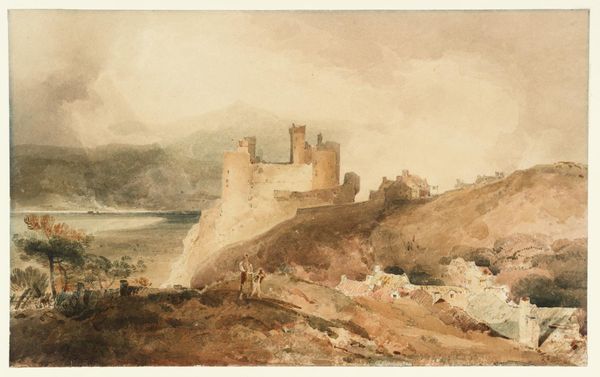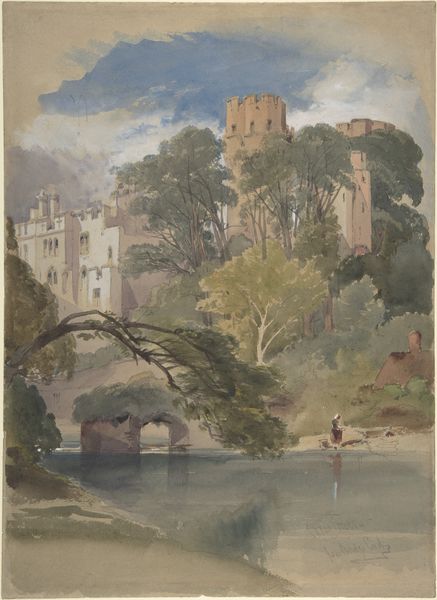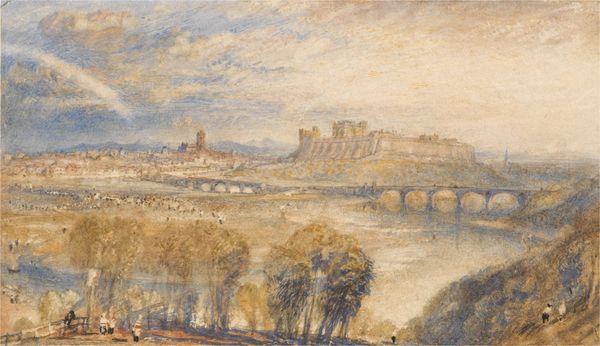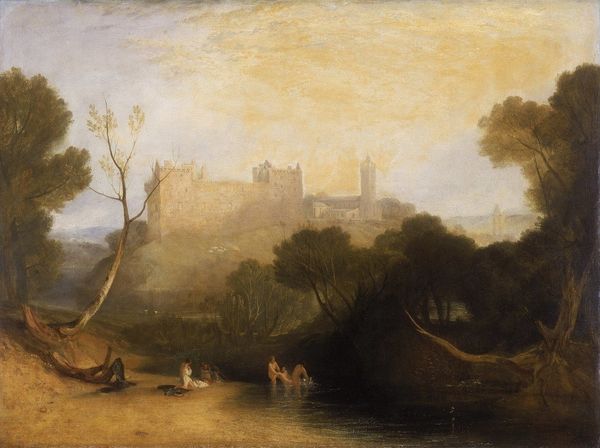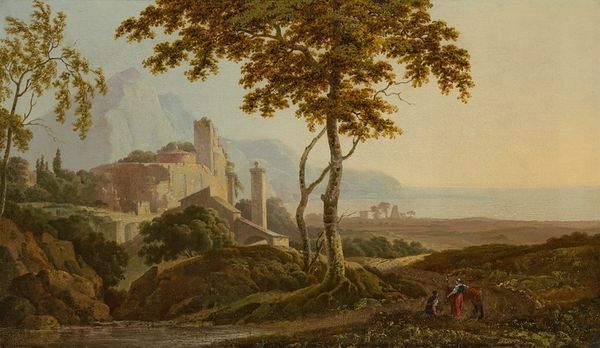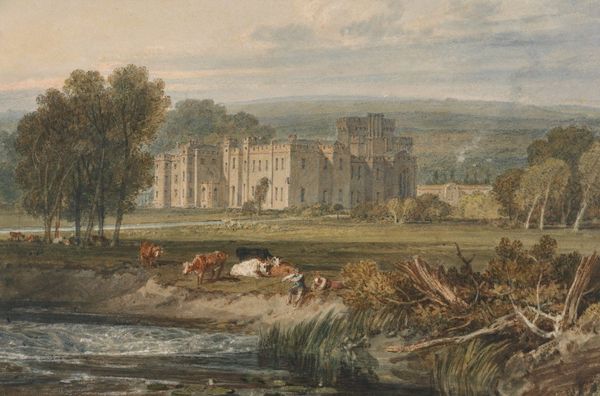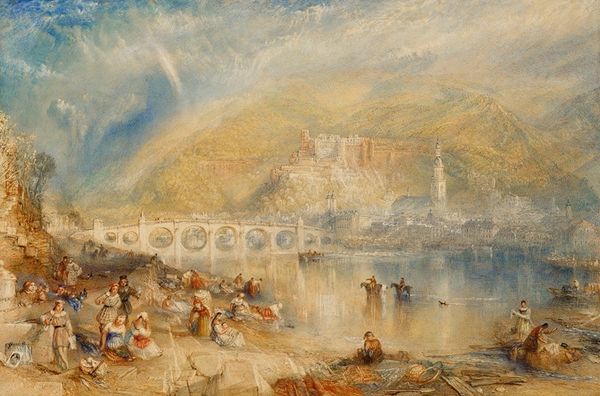
painting, plein-air, watercolor
#
painting
#
plein-air
#
landscape
#
impressionist landscape
#
oil painting
#
watercolor
#
romanticism
#
history-painting
#
watercolor
Copyright: Public Domain: Artvee
Curator: Let’s discuss “Ludlow Castle, Shropshire,” attributed to Joseph Mallord William Turner. Editor: A luminous wash of color, almost dreamlike. It's ethereally beautiful, though also faintly melancholic; a soft grandeur seems to emanate from it. Curator: It appears to be a watercolor, possibly with some additions in oil, quite in line with Turner's known exploration of the interplay between these two media. He likely completed this en plein air, capturing the atmospheric conditions directly. Look closely, and you can see the different layered applications to conjure volume. Editor: And the implications of that medium…watercolor suggests accessibility, portability, and even, perhaps, a certain democratic spirit. Turner taking his practice to the landscape engages with issues of accessibility and mobility. What relationship might these qualities have to this site, historically a location of military authority? Curator: Indeed, consider how the painting softens what was, in reality, a seat of power during border conflicts. Its production contributes to a romanticization, even a touristification, of British history and landscape through its circulation as print, shaping ideas of British national identity in relation to the history represented by places like Ludlow Castle. Editor: Yes, that juxtaposition of leisure and labor…observe the women resting by the river in the foreground. Who are they? What kind of work were they involved in? The aesthetic appeal obscures the social realities, prompting us to consider who has access to leisure. Are we romanticizing rural labor when we erase the context in which it exists? Curator: He made quite a good income by selling reproductive engravings after his paintings to an eager consumer audience, many of them middle-class tourists hoping to see England in person. It is hard not to read this idyllic image as reflecting this consumption and production dynamic. Editor: Turner positions himself as mediating British history, labor, and tourism through a lens of aesthetic beauty. Examining these works, however beautiful, as historical documents demands critical engagement and attention to material contexts, in turn raising further questions of authenticity and access. Curator: Indeed, and through this, he actively contributed to building perceptions of a cohesive English heritage and national identity through the market dynamics of artistic production. Editor: Exactly. His landscapes beckon us to interrogate whose stories are being told.
Comments
No comments
Be the first to comment and join the conversation on the ultimate creative platform.
